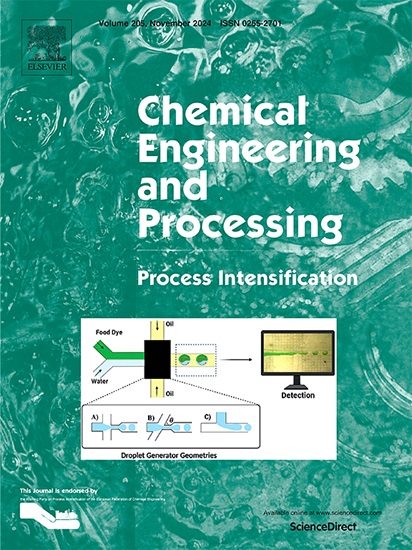Next-generation pervaporation-assisted distillation: Recent advances in process intensification
IF 3.8
3区 工程技术
Q3 ENERGY & FUELS
Chemical Engineering and Processing - Process Intensification
Pub Date : 2025-06-16
DOI:10.1016/j.cep.2025.110416
引用次数: 0
Abstract
Pervaporation is a well-established membrane separation process that effectively overcomes limitations of distillation due to azeotropes and distillation boundaries. The selective mass transfer of pervaporation membranes has enabled successful implementation in a variety of industries, with applications in the chemical industry, as well as the food and pharma industry, including membrane bioreactors in fermentation processes. Yet, the majority of applications in separation processes remain focused on the dehydration of aqueous-organic process streams, including biofuel and bioethanol production. Pervaporation-assisted distillation processes leverage the benefits of both technologies and exploit the resulting synergies to provide energy and cost-efficient separations, especially for azeotropic mixtures, which otherwise require rather energy intensive distillation processes, such as pressure-swing, extractive or hetero-azeotropic distillation. The current review provides an overview of recent developments that enable further process intensification of pervaporation-assisted distillation processes and provides some perspective on emerging trends that may result in a wider application of these interesting hybrid separation processes.

下一代渗透蒸发辅助蒸馏:过程强化的最新进展
渗透蒸发是一种成熟的膜分离过程,有效地克服了由于共沸物和蒸馏边界的限制。渗透蒸发膜的选择性传质已经成功地应用于各种行业,包括化学工业、食品和制药工业,包括发酵过程中的膜生物反应器。然而,分离过程中的大多数应用仍然集中在水有机工艺流的脱水上,包括生物燃料和生物乙醇生产。过蒸发辅助蒸馏工艺利用了这两种技术的优势,并利用由此产生的协同作用,提供了能源和成本效益的分离,特别是对于共沸混合物,否则需要相当耗能的蒸馏过程,如变压、萃取或异共沸蒸馏。当前的综述提供了最近的发展概况,使进一步的过程强化的渗透蒸发辅助蒸馏过程,并提供了一些新兴趋势的观点,可能导致这些有趣的混合分离过程的更广泛的应用。
本文章由计算机程序翻译,如有差异,请以英文原文为准。
求助全文
约1分钟内获得全文
求助全文
来源期刊
CiteScore
7.80
自引率
9.30%
发文量
408
审稿时长
49 days
期刊介绍:
Chemical Engineering and Processing: Process Intensification is intended for practicing researchers in industry and academia, working in the field of Process Engineering and related to the subject of Process Intensification.Articles published in the Journal demonstrate how novel discoveries, developments and theories in the field of Process Engineering and in particular Process Intensification may be used for analysis and design of innovative equipment and processing methods with substantially improved sustainability, efficiency and environmental performance.

 求助内容:
求助内容: 应助结果提醒方式:
应助结果提醒方式:


